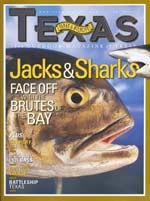
From the Pen of Robert L. Cook
For the first time in years, I went quail hunting several times this past season. It was super — lots of quail, great company and good times. This is somewhat remarkable, since some folks have been predicting the demise — and even the extinction — of quail for the past decade. Everybody has an excuse for why quail numbers are lower than they used to be. Predators, fire ants and feral hogs seem to be leading the list of assumed causes today. Well, folks, I am here to testify that the bobwhite quail is not extinct. The reason for their “decline” is because their habitat has declined in quality and quantity.
Although we hunted on some of the best quail country in North America, I must confess that neither my old friend who invited me hunting nor I are the best shot I’ve ever seen. In fact, we can barely hold our own against a covey rise of 12-18 wild bobwhite quail. It is a “rush,” as they say. Even with a good pointer dog locked on the birds, you just don’t know when they’re going to get up. When they do flush, it is like the earth comes up around you. Maybe you’re too close, maybe too far. Maybe there is a tree between you and the birds that come your way, or maybe they all go in front of the other shooter. A gentleman or lady does not shoot at the other hunter’s birds.
I also like the fact that my gracious host hunts slowly. I try to avoid hunters who hunt too fast, who rush to the point. I’ve always enjoyed hunting slow, and nowadays I’m even slower. I’ve learned to appreciate the experience more, to enjoy the dogs, to smile at my friends’ poor jokes and our frequent misses; maybe I get a shot, maybe I don’t; no matter.
There is one thing that my old friend does as well — or better — than anyone else, anywhere. He manages his land for wildlife, and in doing so, he produces better wildlife habitat for all species. He manages some of his country specifically to favor bobwhite quail. He knows what quail habitat looks like and he makes his country look like that. He thinks like a quail — not too much brush, just barely enough for escape cover; plenty of bunch grasses for nesting, but open enough for easy travel by these little critters and their thimble-sized offspring; jillions of insects; and lots of BB-sized seeds. If an artist wanted to paint a picture of “quail habitat,” he or she would use this fellow’s place as the model.
Another thing, hunting with this guy is like hunting with J. Edgar Hoover. He insists on recording all this information, this data, on quail and your hunt. “You must have the data to make decisions,” he states. “Do not depend on your memory.” We diligently recorded the number of coveys encountered during each hunt; how many birds were in each covey; how many birds were harvested from each covey; how many were mature birds or immature birds of the year, male or female; and what they have been eating. He was constantly asking questions and writing down information. I like that about him.
What are the three key ingredients for more quail, I ask? “Habitat, habitat and habitat,” he replies softly, “Very good deer habitat may only be fair quail habitat. If you want to maximize quail numbers, you must produce quail habitat, you must manage for quail, and … no excuses,” he smiles.

